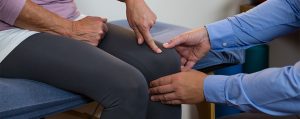Welcome to the Athletico Blog!
Twenty years ago today, Mark Kaufman founded Athletico Physical and Occupational Therapy. Over the past two decades, Athletico has grown tremendously, offering the community a quality option for all of their rehabilitation needs.
It is fitting that today, as the Athletico family celebrates 20 years, the Athletico Blog is launched. This blog was created to extend Athletico’s expertise in the healthcare industry and foster an environment where patients and readers can be educated on all areas of their well-being. The goal of the blog is to provide an interactive source for patient education, focusing on both reader questions and trending topics related to our industry.
We will have a handful of regular bloggers, as well as guest bloggers, to cover all aspects of the healthcare continuum that are important to you. If you have any questions, feedback, or topics you’d like to see covered, please send us a note. Thanks for reading!
